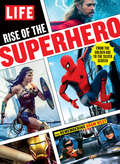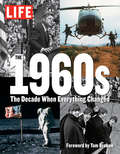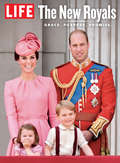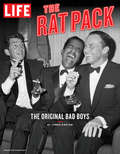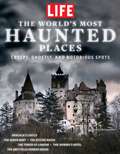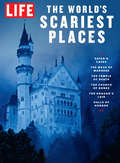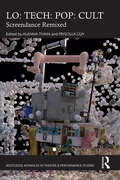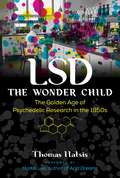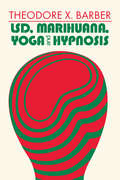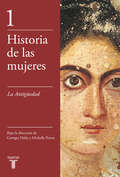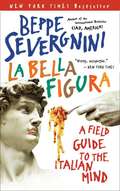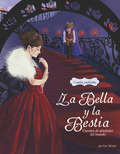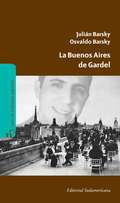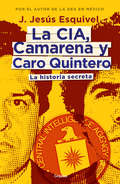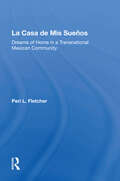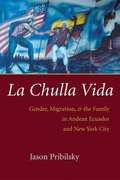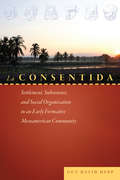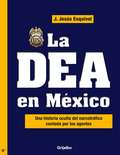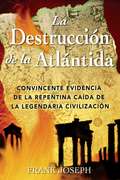- Table View
- List View
LIFE Rise of the Superhero: From the Golden Age to the Silver Screen
by The Editors of LIFEToday, superheroes are more popular than ever, with action-packed movies, TV shows, comic books, graphic novels, and other genres celebrating them. The craft has become more sophisticated, the stories more intricate, with the entire art-form now elevated and celebrated. For as long as characters such as Batman, Wonder Woman, Spider-Man, Thor, Captain America, etc. have been a part of popular culture, the oldest "modern" superhero is only just over 80 years old, that being Superman. Now, in a new Special Edition from LIFE, Rise of the Superhero, which includes an introduction by the legendary Stan Lee, the editors of LIFE trace the superhero phenomenon from its earliest days, then explores the superheroes of today, through historical and current photographs and entertaining text. Essays place the evolution of various superheroes throughout the context of world events through each decade, antiheroes are explored, and the technology that has been used to create the movies and comic books - and influenced the stories - is explained, giving the reader a complete and concise history of the genre. An exclusive bonus showcases the great Adam West, the original TV Batman, with little-seen photos.
LIFE Sherlock Holmes: The Story Behind the World's Greatest Detective
by The Editors of LIFEWith season 4 of the popular Benedict Cumberbatch series, Sherlock, about to air on BBC One and another Robert Downey movie about the great detective in the works, LIFE offers a colorful look back on the life and career of the immortal sleuth, along with a biography of his remarkable creator, Arthur Conan Doyle. Did you know that Holmes was based on a real person? Or that Doyle came to hate him? Or that the writer solved more than a few real-life mysteries himself? You'll find that and much more in this entertaining, immersive, informative new book.
LIFE The 1960s: The Decade When Everything Changed
by Tom Brokaw The Editors of LIFEHere are the 1960s: The Summer of Love, the space race, Vietnam, the assassination of JFK, Andy Warhol, the Berlin Wall, the Beatles. From start to finish, this is the decade when everything changed—when we changed. With insightful commentary and hallmark photography from the archives of LIFE magazine, LIFE: The 1960s reveals the turmoil and triumphs of the most tumultuous decade in American history. The shifting people, places, and events are placed in historic context, year by year from 1960 to 1969, and illuminated with award-winning, iconic photos. A thought-provoking introduction by Tom Brokaw spotlights the enduring legacy of these years, powered by the baby boomers and their quest for love, liberty, and equality. Discover the decade as it unfolded.
LIFE The New Royals
by The Editors of LifeThe aura around the royal family is vastly different than it was in years and decades past. Now, 20 years after the death of the transformative Princess Diana, today's generation of royals are active and engaged, using the power of their position to advance causes for the good of the community. Prince William and Prince Harry, inspired by the example set by their mother, have embraced charities and causes that include mental health and aid wounded veterans. Kate Middleton and her children, little Prince George and Princess Charlotte, are out and about, visible in ways that royals never were before. This is the world that Kate and William's newest child-she is due in early 2018-will enter. The new royals are still glamorous, and now they are more inspiring than ever. LIFE The New Royals highlights the young generations of Windsors with glowing photographs of them, as well as archival photographs of Charles, Diana, the Queen and more, along with rich and thoughtful reporting on one of the world's best-known families. This special edition also includes a family tree of the Windsors and a section on the new generations of royals throughout the world. Packed with dozens of unforgettable images, including the wedding of William and Kate and the latest adorable antics of their children, this is a memorable keepsake for royal watchers everywhere.
LIFE The Rat Pack: The Original Bad Boys
by The Editors of LifeThey weren't the original bad boys of stage and screen, but they were the most famous: Frank Sinatra, Dean Martin, Sammy Davis Jr., Joey Bishop, Peter Lawford and so many hangers-on and wannabes, male and female. Revisit the '60s in this reissue of a classic LIFE special edition-the Rat Pack is in town. Among the highlights:A new introduction, commemorating what would have been Dean Martin's 100th birthdayInside the friendship between Sinatra and John F. Kennedy Jr.The birth of Vegas and how Sin City became the sensation it is todayRare and intimate photos from the great LIFE magazine photographer John Dominis
LIFE The World's Most Haunted Places: Creepy, Ghostly, And Notorious Spots
by The Editors of LIFELife Magazine presents The World's Most Haunted Places.
LIFE The Worlds Scariest Places
by The Editors of LIFETake an otherworldly world tour of horrifying haunts!This Halloween, visit haunted houses, creepy cemeteries, scary ghost towns, and shocking paranormal hotspots . . . all without leaving the comfort of your own well-lit home.
LO: Screendance Remixed (ISSN)
by Alanna Thain Priscilla GuyThis edited collection assembles international perspectives from artists, academics, and curators in the field to bring the insights of screendance theory and practice back into conversations with critical methods, at the intersections of popular culture, low-tech media practices, dance, and movement studies, and the minoritarian perspectives of feminism, queer theory, critical race studies and more.This book represents new vectors in screendance studies, featuring contributions by both artists and theoreticians, some of the most established voices in the field as well as the next generation of emerging scholars, artists, and curators. It builds on the foundational cartographies of screendance studies that attempted to sketch out what was particular to this practice. Sampling and reworking established forms of inquiry, artistic practice and spectatorial habits, and suspending and reorienting gestures into minoritarian forms, these conversations consider the affordances of screendance for reimaging the relations of bodies, technologies, and media today.This collection will be of great interest to students and scholars in dance studies, performance studies, cinema and media studies, feminist studies, and cultural studies.
LSD — The Wonder Child: The Golden Age of Psychedelic Research in the 1950s
by Thomas Hatsis• Explores the different groups--from research labs to the military--who were seeking how best to utilize LSD and other promising psychedelics like mescaline • Reintroduces forgotten scientists like Robert Hyde and Rosalind Heywood • Looks at the CIA&’s notorious top-secret mind-control program MKUltra • Reveals how intellectuals, philosophers, artists, and mystics of the 1950s used LSD to bring ancient rites into the modern ageExploring the initial stages of psychedelic study in Europe and America, Thomas Hatsis offers a full history of the psychedelic-fueled revolution in healing and consciousness expansion that blossomed in the 1950s--the first &“golden age&” of psychedelic research. Revealing LSD as a &“wonder child&” rather than Albert Hofmann&’s infamous &“problem child,&” the author focuses on the extensive studies with LSD that took place in the &’50s. He explores the different groups--from research labs to the military to bohemian art circles--who were seeking how best to utilize LSD and other promising psychedelics like mescaline. Sharing the details of many primary source medical reports, the author examines how doctors saw LSD as a tool to gain access to the minds of schizophrenics and thus better understand the causes of mental illness.The author also looks at how the CIA believed LSD could be turned into a powerful mind-control weapon, including a full account of the notorious top-secret program MKUltra. Reintroducing forgotten scientists like Robert Hyde, the first American to take LSD, and parapsychologist Rosalind Heywood, who believed LSD and mescaline opened doors to mystical and psychic abilities, the author also discusses how the infl uences of Central American mushroom ceremonies and peyote rites crossbred with experimental Western mysticism during the 1950s, turning LSD from a possible madness mimicker or mind weapon into a sacramental medicine. Finally, he explores how philosophers, parapsychologists, and mystics sought to use LSD to usher in a new age of human awareness.
LSD, Marihuana, Yoga, and Hypnosis
by Theodore X. BarberThe practice of yoga, hypnosis, and the use of psychedelic drugs to alter psychological and physiological states is not unknown to the study of psychology. They have been called "soft" studies and labeled unimportant. This is mostly because they are difficult to study and understand, often focusing on unobservable internal states such as altered states of consciousness, Samadhi, or hypnotic states. This book, in its approach to thinking about this topic and method for analysis, focuses only on phenomena that can be observed, such as behavioral changes.By centering on only those aspects of the psychological and physiological effects of yoga, hypnosis, and psychedelic drugs which can be measured and analyzed using this new method, Barber distinguishes this book from others in the field. He asks what overt behaviors and verbal reports are clearly observable when psychedelic drugs are taken, yoga is practiced, or hypnotic-induction procedures are administered. Instead of treating the phenomena traditionally associated with psychedelic drugs, yoga, or hypnosis as undifferentiated conglomerates, an attempt will be made to set apart and treat separately each of the many phenomena associated with each of these areas of inquiry.This book does not set out to simply demonstrate the importance of psychedelics, yoga, and hypnosis, or to present substantive material pertaining to these topics. It also treats each topic as continuous with other known psychological phenomena and as an important piece to the puzzle of social psychology. It differs from most previous treatises in that it does not assume that psychedelics, yoga, and hypnosis can bring out unused mental or physical capacities in man, heighten awareness or give rise to enhanced creativity, or produce altered states of consciousness, suspension of conventional reality-orientation, changes in body-image, or changes in perception.
La Antigüedad: La Antigüedad (Historia de las mujeres #Volumen 1)
by Georges DubyEsta obra busca analizar cómo las relaciones de los sexos condicionan la evolución de las sociedades y la necesidad de que las mujeres encuentren, al fin, su espacio propio. Esta Historia de las mujeres responde a la necesidad de ceder la palabra a las mujeres. Alejadas, desde la Antigüedad, del escenario donde se enfrentan a los dueños del destino, reconstruir su historia significa describir su lento acceso a los medios de expresión y su conversión en persona que asume un papel protagonista. Este análisis implica, asimismo, que las relaciones entre los sexos condicionan los acontecimientos, o la evolución de las sociedades. No se buscan conclusiones tajantes sino que las mujeres encuentren, al fin, su espacio propio. Tomando la periodización habitual y el espacio del mundo occidental, esta obra se divide en cinco volúmenes independientes pero complementarios. Este primer volumen trata de las funciones y roles sociales de las mujeres en la Grecia antigua y en Roma.
La Argentina (Edición Corregida y Actualizada): Historia del país y de su gente
by María Sáenz QuesadaSáenz Quesada sintetiza el recorrido histórico y cronológico que vadesde la fundación de la sociedad colonial hasta la actualidad. Son 74capítulos pensados para ser leídos en forma independiente, que incluyenlos hechos políticos sobresalientes, pero también referencias a la vidaprivada, rasgos biográficos de los protagonistas, el clima de ideas y lasensibilidad de cada época, además de ejemplos para que el pasado sehumanice y se vuelva más cercano y comprensible. Este singular relato historiográfico abarca la construcción de laRepública del siglo XIX, la gran inmigración y la prosperidad económica,la inestabilidad política en el siglo XX y la crisis de comienzos delmilenio, la debacle del 2001y el período de recuperación iniciado conlas presidencias de Néstor Kirchner y Cristina Fernández.Serio y entretenido a la vez, este libro se constituye en una obraindispensable para el conocimiento y el estudio de la historiaargentina, y resulta un excelente auxiliar en la indagación de laidentidad.
La Argentina ansiolítica: Medicados y automedicados: cómo nos están cambiando la vida las pastillas
by Valeria ShapiraLa medicalización de la vida cotidiana es un fenómeno que se repite encada vez más países, pero la forma en que los argentinos serelacionan con pastillas de todo tipo presenta sus particularidades.Shapira las aborda sin prejuicios y con humor. Un hombre que llega a la guardia de una clínica con síntomas de ataquede pánico, una abuela que discute con el cura de la iglesia sobre sunecesidad de visitar a un psiquiatra, un ejecutivo que odia laspastillas y prefiere el diván, una mujer fóbica a los aviones que nuncaviaja sin su pastilla «mágica» o una chica que logró terminar su carreracon la ayuda de ansiolíticos son algunos de los personajes anónimos quetransitan las páginas de este libro.Durante los últimos años, en ese sector de la población que todavíallamamos clase media se instaló una costumbre cada vez más difundida: lade salir a la calle con un ansiolítico en el bolsillo. «La Argentinaansiolítica» recoge historias de vida de argentinos que tienen otuvieron un vínculo con esos medicamentos que la ciencia consiguiómejorar desde los años 70, y cuyo uso suele vincularse con la denominadamedicalización de la vida cotidiana.Con una prosa ágil, directa y nunca exenta de humor, Valeria Shapiraabre las puertas a esa realidad que pasa delante de nuestros ojos, sinpretender planteos técnicos o cientificistas en torno de estas drogasque hoy se cuentan entre las más vendidas. Más que entregar fórmulas, laautora abre preguntas: ¿por qué todavía estigmatizamos a quienes tomanansiolíticos? ¿Es necesario enfrentar las pastillas y el diván, en unpaís con tradición psicoanalítica tan fuerte? ¿Pretendemos tratar lascrisis nacionales con remedios, en lugar de buscar soluciones políticaso económicas? ¿Quién se atreve a negar que vivimos automedicados?La Argentina ansiolítica invita a conocer, sin prejuicios, los caminosque cada uno busca para lidiar con su ansiedad en este rincón del mundodonde la angustia y la incertidumbre cotidianas son parte de nuestramarca país.
La Bella Figura: A Field Guide to the Italian Mind
by Beppe SevergniniJoin Beppe on a lively tour of modern Italy that takes you behind the seductive face it puts on for visitors and finds Italy's true self.
La Bella y la Bestia: 3 cuentros predilectos de alrededor del mundo (Cuentos multiculturales)
by Cari MeisterThink there's just one fairy tale with a beautiful girl and a monster? Think again! Cultures all around the world have their own Beauty and the Beast stories. Visit France, China, and Switzerland, to find out who asks for a grape instead of a rose, and whose beast is a snake. Fully translated Spanish text.
La Buenos Aires de Gardel
by Osvaldo Barsky Julián Barsky¿Cómo era la ciudad donde se formó Carlos Gardel? ¿En qué consistió esefascinante y misterioso mundo urbano de principios del siglo XX? ¿Cómose construyó aquel universo cultural en el que llegaron a convivir eltango y la ópera, el sainete y la zarzuela, los Podestá e IsadoraDuncan? Entre 1870 y 1920 el traslado de una gran población europea y delinterior hacia Buenos Aires generó una ciudad cosmopolita donde tomórelevancia el tema de la identidad nacional. En el campo musical, lasíntesis creativa fue el tango, y su forma cantada integró no solo unaforma nueva de interpretación, sino también una poética en gestación. Elmérito de este fenómeno correspondió esencialmente a Carlos Gardel. Peroeste artista es inseparable de una ciudad en construcción, en términosinfraestructurales y edilicios, sociales y estéticos. Este proceso es elque ilustra el presente libro. A partir de allí, ya no hubo Buenos Airessin Gardel, quien la dotó de su máxima identidad musical y cultural.
La CIA, Camarena y Caro Quintero: La historia secreta
by J. Jesús EsquivelUn libro explosivo que aporta las claves definitivas para esclarecer un suceso que definió la historia del narcotráfico en México: el asesinato del agente de la DEA Enrique Kiki Camarena, en febrero de 1985. Se trata de un caso emblemático que pone en evidencia la forma en que el crimen organizado adquirió un poder prácticamente ilimitado en nuestro país, gracias a la complicidad urdida con policías, militares y funcionarios públicos, algunos de ellos aún en activo.Por medio de las confesiones de tres testigos que integraron las filas del entonces pujante cártel de Guadalajara, J. Jesús Esquivel ofrece un recuento inédito de las actividades criminales de capos de la talla de Ernesto Fonseca Carillo, Juan José Esparragoza, el Azul, Rafael Caro Quintero, señalados como coautores de la muerte de Camarena. Asimismo, da a conocer el testimonio completo del agente Héctor Berrellez -encargado de investigar el homicidio en la llamada Operación Leyenda-, quien confirma que la propia CIA habría estado detrás del crimen.En tal contexto, a lo largo de estas páginas se revelan datos, nombres y momentos que explican las perspectivas de la trágica relación entre México y Estados Unidos, atrapada en las telarañas de la corrupción por la producción, el tráfico y el consumo de drogas. Así, no obstante que la investigación nos cuenta las tribulaciones de una sociedad tan lejana como la de los años ochenta, remite y desentraña un presente de mayor tormento.
La Cacería
by Mirta OjitoLa verdadera historia del asesinato de un inmigrante que transformó un acogedor pueblo de Long Island en la zona cero de la guerra contra la inmigración. En noviembre de 2008, Marcelo Lucero, un inmigrante Ecuatoriano de treinta y siete años, fue atacado y asesinado por un grupo de adolecentes cuando caminaba por las calles de Patchogue. Los atacantes iban a cazar beaners término despectivo para Latinos algo que formaba parte de su diversión habitual. Mientras el país lucha contra el creciente número de inmigrantes indocumentados y los políticos avanzan su carrera canalizando y propagando el odio al inmigrante, los latinos se han convertido en el blanco de múltiples ataques de odio. Lucero, un humilde trabajador de una tintorería, se convirtió en otra víctima de esta fiebre anti-inmigratoria. Tras su muerte, Patchogue, un tranquilo y casi desconocido suburbio Estadounidense, se convirtió en la zona cero en la guerra contra la inmigración y Lucero en un símbolo de todo lo que no funciona en nuestro sistema migratorio: menos visas para viajar a Estados Unidos, fronteras porosas, pocos buenos trabajos y un grave aumento de la intolerancia y el racismo. Basado en entrevistas de primera mano, Mirta Ojito periodista que compartióun Pulitzer de equipo en The New York Times ha elaborado un profundo retrato de una comunidad que intenta enfrentarse al odio y al miedo que yace bajo su idílica imagen. Con el compromiso de contar todos los lados de esta historia, Ojito ofrece una apasionante narración y una visión aguda e indispensable sobre uno de los problemas más acuciantes en los Estados Unidos de hoy.
La Cacería: Una historia de inmigración y violencia en Estados Unidos (Hunting Season,Spanish)
by Mirta OjitoLa verdadera historia del asesinato de un inmigrante que convirtió a un pueblo acogedor en Long Island, en la zona cero en la guerra contra la inmigración. En noviembre del 2008, Marcelo Lucero, un inmigrante Ecuatoriano de treinta y siete años, fue atacado y asesinado por un grupo de adolecentes cuando caminaba por las calles de Patchogue acompañado por un amigo de infancia. Los atacantes iban a cazar beaners --término despectivo para Latinos-- siguiéndolos y acosándolos, que, llegaron a confesar los adolecentes, formaba parte de su entretenimiento habitual. Los latinos en Estados Unidos, son mayormente hombres, y aunque no todos inmigrantes, se han convertido en el blanco de ataques de odio en años recientes. La nación lucha con la creciente cantidad de inmigrantes indocumentados, donde los suburbios se han convertido en el primer lugar de destino, y donde los políticos pueden avanzar su carera arrojando una retorica anti-inmigrante. Lucero trabajaba en una tintorería cuando cayó víctima a la fiebre anti-inmigrante. A raíz de su muerte, Patchogue fue puesto en primera plana, un casi desconocido suburbio de Estados Unidos, se convirtió en la zona cero en la guerra contra la inmigración. Tras su muerte, Lucero se convirtió en símbolo de todo lo malo de nuestro sistema migratorio: oportunidades disminuyentes para obtener visas para viajar a Estados Unidos, fronteras porosas, una dependencia creciente de trabajo a bajo costo y el aumento de la intolerancia. Tomando de entrevistas de primera mano e informando del lugar de los hechos, la periodista Mirta Ojito ha elaborado un inquebrantable retrato de una comunidad luchando para conciliar el odio y el miedo en la idílica imagen del suburbio típicamente estadounidense. Con un compromiso de contar todos los lados de una historia, Ojito desenreda una narrativa apasionante con objetividad y visión, proporcionando una mirada invaluable en uno de los problemas más alucinantes de los Estados Unidos.
La Casa De Mis Suenos: Dreams Of Home In A Transnational Migrant Community
by Peri L FletcherUnable to secure a full livelihood in either Mexico or the United States, migrants from the rural village of Napizaro in central Mexico must extend their families, and their community, across the border. The lives of Napizarenos demonstrate the difficulties of reproduction in a transnational context, calling into question the way we think about households, families, and communities. La Casa de Mis Sueños examines the efforts of villagers from Napízaro to build their dream houses in Mexico through participation in transnational migration. New house designs reshape the spatial ordering of everyday life and are part of the recreation of social space in a changing economic and moral landscape. These changes have engendered conflict as migration usurps traditional routes to prosperity and success and as migrant houses become both the locus of growing consumerism and a site for heavily charged and contested ideas about family and community. This book is more than an engaging account of the realities that pervade one small community. It is an examination of the ways in which global processes penetrate the local, the daily, and the personal in rural Mexico. Above all, it asserts the power of place as constitutive of the ways in which people create meaning in their lives.
La Chulla Vida: Gender, Migration, and the Family in Andean Ecuador and New York City
by Jason PribilskyChronicling the experience of young Andean families as their lives extend between the Ecuadorian highlands and New York City, this book takes an in-depth look at transnational labor migration and gender identities. Jason Pribilsky offers an engrossing and sensitive account of the ways in which young men and women in these two locales navigate their lives, exploring the impact of gender, generation, and new forms of wealth in a single Andean community. transnational labor on the individuals and communities remain largely undocumented. The author draws on firsthand observations of everyday lives to explore issues of transnational marriages and material consumption in the region. Pribilsky presents a study that is both engaging and challenging, a vital contribution to the fields of Latin American studies and immigration studies.
La Consentida: Settlement, Subsistence, and Social Organization in an Early Formative Mesoamerican Community
by Guy David HeppLa Consentida explores Early Formative period transitions in residential mobility, subsistence, and social organization at the site of La Consentida in coastal Oaxaca, Mexico. Examining how this site transformed during one of the most fundamental moments of socioeconomic change in the ancient Americas, the book provides a new way of thinking about the social dynamics of Mesoamerican communities of the period. Guy David Hepp summarizes the results of several seasons of fieldwork and laboratory analysis under the aegis of the La Consentida Archaeological Project, drawing on various forms of evidence—ground stone tools, earthen architecture, faunal remains, human dental pathologies, isotopic indicators, ceramics, and more— to reveal how transitions in settlement, subsistence, and social organization at La Consentida were intimately linked. While Mesoamerica is too diverse for research at a single site to lay to rest ongoing debates about the Early Formative period, evidence from La Consentida should inform those debates because of the site’s unique ecological setting, its relative lack of disturbance by later occupations, and because it represents the only well-documented Early Formative period village in a 300-mile stretch of Mexico’s Pacific coast. One of the only studies to closely document multiple lines of evidence of the transition toward a sedentary, agricultural society at an individual settlement in Mesoamerica, La Consentida is a key resource for understanding the transition to settled life and social complexity in Mesoamerican societies.
La DEA en México: Una historia oculta del narcotráfico contada por los agentes
by J. Jesús EsquivelEl combate al narcotráfico en México desde el punto de vista de los agentes de la Agencia Antidrogas de Estados Unidos, con los testimonios de varios de ellos que han trabajado en nuestro país en diversos momentos. Un libro revelador e impactante que detalla por primera vez la forma en que la DEA ha intervenido en México desde su creación en 1973, y cómo lo sigue haciendo y lo hará en el futuro porque llegó para no irse nunca. Hasta hoy no se había escrito una investigación como ésta. Se sospechaba que la DEA operaba en el territorio nacional con entera libertad, pero se carecía de evidencias como las que aquí presenta J. Jesús Esquivel -corresponsal en Washington del semanario Proceso- a través de los testimonios directos de agentes antinarcóticos. Ellos nos cuentan cómo operan, cuáles son sus métodos de investigación, cómo se allegan informantes y cuál es la relación que establecen con las autoridades, las fuerzas armadas y las policías nacionales, así como con narcotraficantes y otras agencias norteamericanas. Entre otras valiosas revelaciones, La DEA en México documenta cómo los agentes estadounidenses recorren el país ilegalmente armados, algo que el gobierno mexicano ha ocultado, al mismo tiempo que contiene referencias abiertas y directas sobre la corrupción imperante entre todos los involucrados nacionales en el combate a las drogas. Por añadidura, se da a conocer un documento interno de la DEA que describe paso a paso la investigación que en 2005 condujo al descubrimiento de narcofosas en Ciudad Juárez, donde sale a la luz cómo el Departamento de Justicia de Estados Unidos protegió a un informante que perpetró un asesinato mientras colaboraba con esa misma dependencia. Finalmente, siempre desde la óptica de los agentes extranjeros, se reconstruye la lucha contra las drogas desde los años setenta y se relata la historia de los principales capos, como Amado Carrillo Fuentes, Juan García Ábrego y, por supuesto, El Chapo Guzmán, a quien "no se atrapa porque el gobierno mexicano no quiere hacerlo", según sostienen los entrevistados.
La Destrucción de la Atlántida: Convincente evidencia de la repentina caída de la legendaria civilización
by Frank JosephTodas culturas indígenas comparten el mito de un antiguo diluvio. En su libro La Destrucción de la Atlántida, autor Frank Joseph enlaza este fenómeno mundial con la historia de la civilización perdida de la Atlántida. Este cuento extenso com-bina 20 años de investigación con una imaginativa y pasmosa representación de un gran imperio corrompido por una gran codicia por la riqueza y el poder, ofreciendo una lección importante para nuestra civilización materialista.
La Dictadura: Historia secreta de Chile
by Jorge BaraditUna crónica sobre la vida política y social en Chile durante la dictadura militar y sus repercusiones vigentes. ¿Cuál fue el origen de la división política que llevó al golpe de Estado de 1973? ¿Cuándo y de qué manera se gestó el bombardeo a La Moneda? ¿Cuál fue la agenda oculta para refundar Chile durante la dictadura de Pinochet? ¿Cuáles fueron las operaciones del régimen militar y de la resistencia que marcaron los destinos del país? Con su distinguible estilo narrativo y el aura de Historia secreta de Chile, Baradit responde estas preguntas y retrata no solo los secretos y la ferocidad del régimen, sino también la intimidad del hogar chileno durante los años más dramáticos de nuestra historia reciente, desde 1970 hasta la muerte de Pinochet en 2006. La dictadura es un libro ágil, pertinente e inolvidable para dilucidar un pasado aún oscuro y, asimismo, los traumas y frustraciones del país actual.
